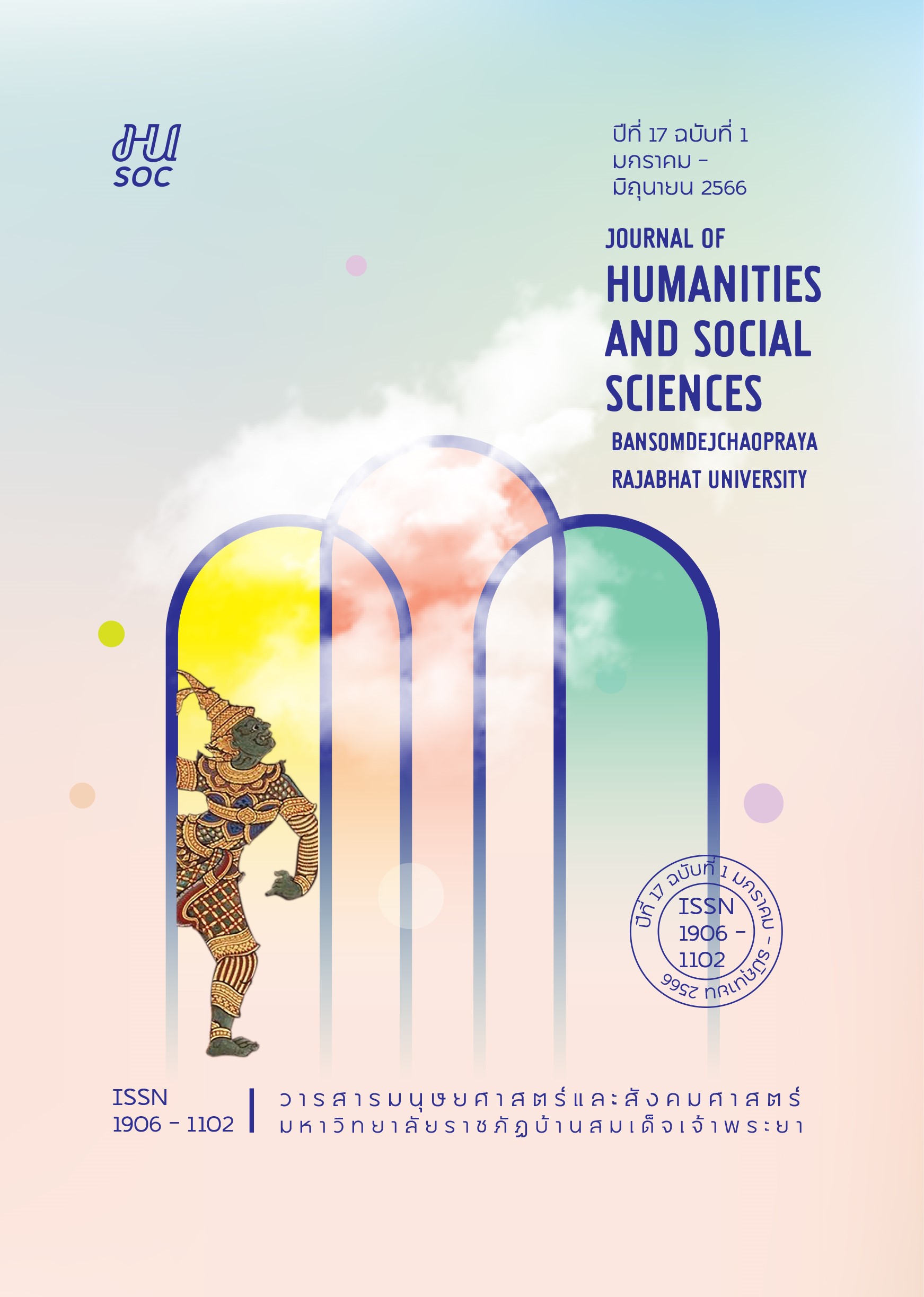Old-Style E-Seaw Songs: The Trace of Exclamation and Singing Ornamenting Dialogues
Keywords:
Old-style E-Seaw song, Trace, Ornamenting, DialogueAbstract
This article aims to analyze the trace of exclamation use in the singing of old-style E-Seaw songs. The function of exclamation is to ornament the dialogues which both male and female lead singers used to sing and perform in the past. Unlike nowadays, the singers do not sing the exclamation. The group of data analyzed in this article is the performing videos “Old-Style E-Seaw Songs” retrieved from the YouTube channel of Soon Sangkeet Sin Thanakan Krungthep (or Musical Art Center of the Bangkok Bank). The result of analysis shows that there are 11 exclamation words used in the performance of old-style E-Seaw songs as followed; thút (ทุด), oêi (เอ้ย), ô (อ้อ) or ǒ (อ๋อ), phíthô (พิโธ่) (phútthô (พุทโธ่)), hoéi (เฮ้ย), cháchá (ชะชะ), é (เอ๊ะ), mǎe (แหม), หนอยหน็อย (nǒinǒi) (nǒinâe (หน็อยแน่), oěi (เอ๋ย) and nàe (แน่ะ). The trace of the use of those exclamation words ornaments the dialogues. Most of the exclamation words express dissatisfaction. Moreover, the exclamation of amazement and affection are also found. The use of exclamation ornamenting dialogue songs is the charm of good old time where the social context related. The present E-Saew performance does not include those exclamation words anymore since the songs are memorized and the role and order of singers and the time are fixed. The exclamation words which male and female lead singers used in singing or improvisation could not be brought in the performance accordingly due to the change of the role and performing context.
References
เกลียว เสร็จกิจ (ขวัญจิต ศรีประจันต์). แม่เพลงอีแซว ศิลปินแห่งชาติสาขาศิลปะการแสดง (เพลงพื้นบ้าน) ประจำปี 2539, (23 กุมภาพันธ์ 2565). สัมภาษณ์.
บัวผัน สุพรรณยศ. (2548). “เพศศึกษาในเพลงพื้นบ้าน” ใน ภาษาส่องสังคม วรรณคดีส่องชีวิต: หนังสือรวมบทความจากการประชุมวิชาการ 12–13 พฤษภาคม ณ มหาวิทยาลัยหอการค้าไทย.
ราชบัณฑิตยสถาน. (2556). พจนานุกรม ฉบับราชบัณฑิตยสถาน พ.ศ. 2554 เฉลิมพระเกียรติพระบาทสมเด็จพระเจ้าอยู่หัว เนื่องในโอกาสพระราชพิธีมหามงคลเฉลิมพระชนมพรรษา 7 รอบ 5 ธันวาคม 2554. กรุงเทพฯ: ราชบัณฑิตยสถาน.
วิจินตน์ ภาณุพงศ์ และคณะ. (2552). บรรทัดฐานภาษาไทย เล่ม 3: ชนิดของคำ วลี ประโยค และสัมพันธสาร. กรุงเทพฯ: สถาบันภาษาไทย สำนักวิชาการและมาตรฐานการศึกษา สำนักงานคณะกรรมการการศึกษาขั้นพื้นฐาน กระทรวงศึกษาธิการ.
ศูนย์สังคีตศิลป์ ธนาคารกรุงเทพ. (2563). รายการแสดงของศูนย์สังคีตศิลป์ธนาคารกรุงเทพ ครั้งที่ 833 เพลงอีแซว คณะแม่บัวผัน จันทร์ศรี. สืบค้น 23 กุมภาพันธ์ 2565, จาก https://www.youtube.com/watch?v=CmW0aH6jnYs&t=2181s
สุกัญญา ภัทราชัย. (2540). เพลงปฏิพากย์: บทเพลงแห่งปฏิภาณของชาวบ้านไทย. กรุงเทพฯ: โรงพิมพ์แห่งจุฬาลงกรณ์มหาวิทยาลัย.
อนุรักษ์ศิลปวัฒนธรรมไทย. (2564). มหกรรมพื้นบ้าน ตำนานสุโขทัยเพลงอีแซว คณะแม่ขวัญจิต ศรีประจันต์ เพลงฉ่อยพ่อสุชิน ทวีเขตต์. สืบค้น 23 กุมภาพันธ์ 2565, จาก https://www.youtube.com/watch?v=VidenxQ_rwE
เอนก นาวิกมูล. (2550). เพลงนอกศตวรรษ. (พิมพ์ครั้งที่ 4). กรุงเทพฯ: มติชน.
อุปกิตศิลปสาร, พระยา. (2544). หลักภาษาไทย. (พิมพ์ครั้งที่ 10). กรุงเทพฯ: ไทยวัฒนาพานิช.
Subanwatin สุบรรณวาทิน. (2563). เพลงอีแซว พ่อเพลงแม่เพลง สุพรรณ อ่างทอง. สืบค้น 23 กุมภาพันธ์ 2565, จาก https://www.youtube.com/watch?v=V4GtVvsUvLQ&t=808s
Downloads
Published
How to Cite
Issue
Section
License

This work is licensed under a Creative Commons Attribution-NonCommercial-NoDerivatives 4.0 International License.



